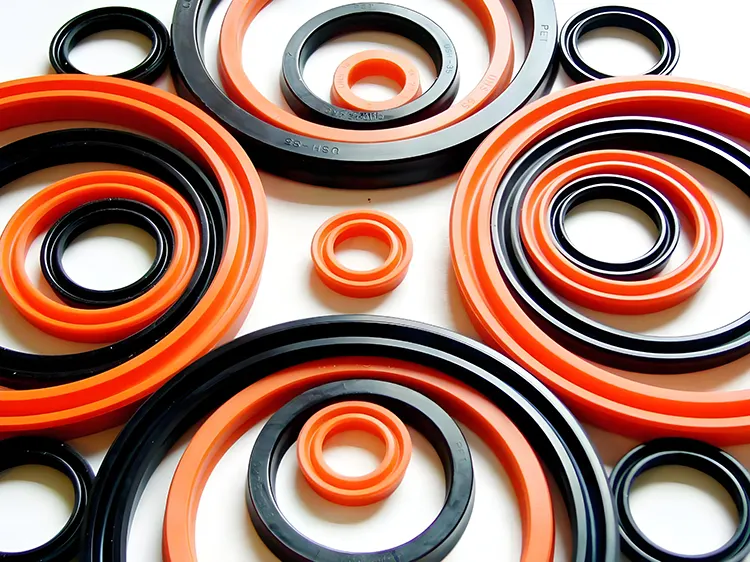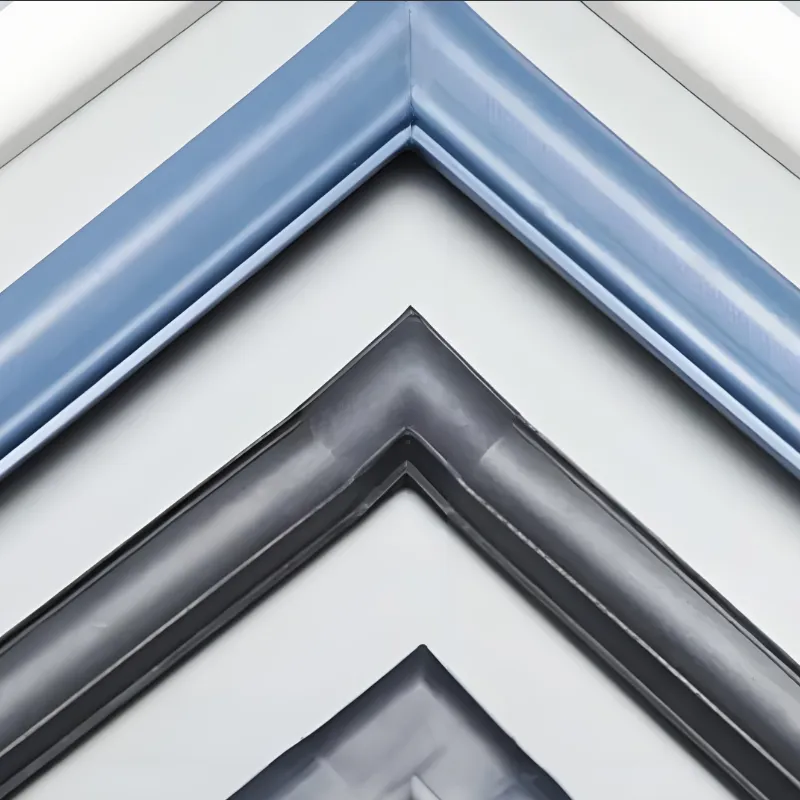Introduction
Rubber sealing parts may appear small and straightforward, but their pricing is anything but simple. Over the past decade, I’ve worked with countless buyers, engineers, and product managers who were surprised at how widely the cost of rubber seals can vary—even for similar-looking items. So, what drives these price differences?
In reality, the price of a rubber sealing part is shaped by a combination of factors, ranging from the raw material selected and the complexity of the design to manufacturing methods, certification needs, and even shipping logistics. If you’re sourcing an O-ring for a coffee machine or a custom gasket for a high-performance pump, these variables determine more than just cost—they impact functionality, reliability, and total cost of ownership.
Understanding these cost drivers isn’t just useful—it’s strategic. It helps prevent under-specifying a part that fails in service or over-engineering a solution that strains your budget. For procurement teams, this insight supports better supplier comparisons and cost negotiations. For product managers, it’s essential for aligning design and performance with market expectations.
Here’s a detailed breakdown of the 10 key factors that influence the price of rubber sealing parts—from materials and tooling to origin and compliance. Let’s dive in.
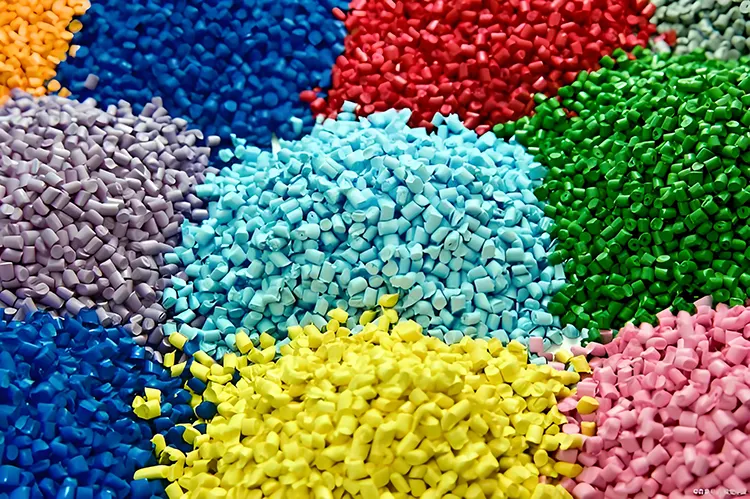
1. Material-Related Factors
When it comes to rubber sealing parts, material selection is often the single most important driver of price. The rubber compound you choose doesn’t just affect cost—it defines the seal’s performance, longevity, and compliance with regulatory requirements.
Type of Rubber Compound
The base elastomer determines many of the product’s essential properties. General-purpose materials like EPDM or NBR are relatively affordable and widely used in automotive and water applications. In contrast, specialty rubbers such as FKM (Viton®), silicone, or perfluoroelastomers (FFKM) can cost 5–20 times more, but offer superior resistance to heat, chemicals, or compression set.
Quote: “The wrong compound might save a dollar upfront, but cost hundreds in system failure.”
Certification Requirements (e.g., FDA, RoHS, REACH)
Seals used in food, medical, or electronics applications often need to meet strict compliance standards. For instance, FDA-grade silicone or RoHS-compliant EPDM can be significantly more expensive due to additional testing, cleaner production environments, and traceable raw materials.
Additives and Fillers
Many rubber formulations include carbon black, plasticizers, flame retardants, or anti-aging agents. These additives enhance performance but increase the cost—especially when high-purity grades are required. Conductive seals or those with UV stability, for example, may involve costly formulations.
Curing Systems (Sulfur, Peroxide, Platinum)
The curing (vulcanization) method has a direct effect on both performance and cost. Sulfur curing is the most economical but may not provide the same thermal or compression-set resistance as peroxide or platinum curing, which are often used in high-end or FDA-compliant products.
In summary, material choices set the foundation for performance and compliance, and even small changes in formulation can lead to big shifts in pricing. At KINSOE, we help clients select the most cost-effective compound that meets both technical and regulatory needs—whether it’s a peroxide-cured EPDM for chemical resistance or a platinum-cured silicone for FDA use.
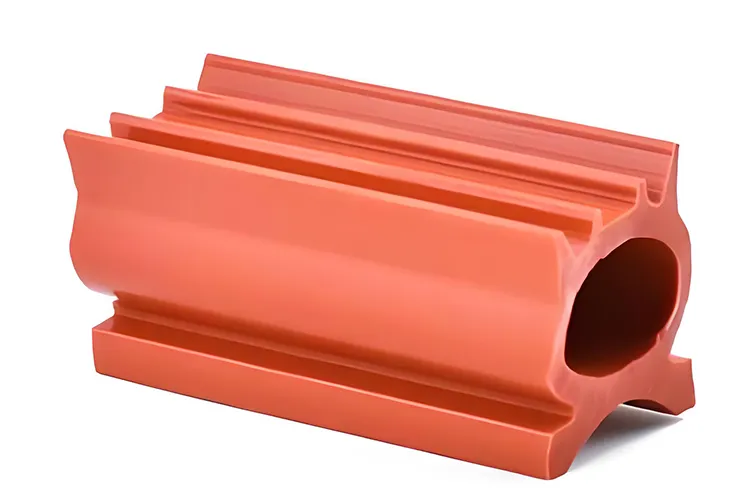
2. Design and Technical Requirements
Once the material is selected, the technical design of the sealing part becomes the next major cost influencer. A seemingly minor design decision can lead to significant changes in tooling cost, scrap rate, production efficiency, and final inspection needs.
Geometry Complexity
A basic round O-ring is far cheaper to produce than a custom-shaped gasket with multiple sealing lips, holes, or undercuts. Complex geometries often require multi-part molds or secondary operations, both of which raise costs. Even small design features—like molded logos or internal cavities—can require intricate mold engineering.
Tolerances and Surface Finish
Tight dimensional tolerances (e.g., ±0.05 mm) and specific surface finish requirements demand high-precision tooling and stricter process controls. Achieving these specifications often means higher mold costs, more frequent quality checks, and slower production speeds.
Golden Point: “The tighter the tolerance, the higher the cost—especially when working with elastic materials like rubber.”
Mechanical and Chemical Performance Requirements
If a seal must withstand aggressive chemicals, abrasive environments, or long-term dynamic loads, the entire design must account for stress distribution, compression, and media compatibility. This often results in more expensive materials, reinforced structures, or thicker cross-sections, increasing both material use and cycle time.
Hardness (Shore A), Temperature, and Pressure Ratings
Specifying the right hardness is essential for sealing performance, but going too hard or soft can lead to premature failure. High-temperature or high-pressure applications may also require reinforced compounds or design adjustments, adding both complexity and cost. For example, seals in an industrial oven might need to resist 250°C, while a hydraulic seal may need to hold 200 bar of pressure.
At KINSOE, we frequently support clients through design-for-manufacturing (DFM) consultations to balance technical requirements with cost efficiency. Often, we identify ways to simplify a design without compromising performance, ultimately reducing both tooling investment and unit cost.
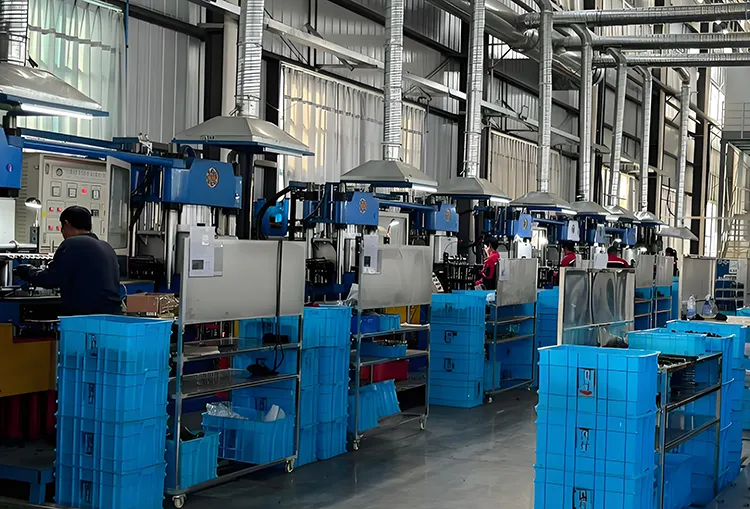
3. Production Process and Tooling
Even with the right material and design, how a rubber sealing part is manufactured has a dramatic impact on pricing. From tooling investment to mold life and scrap rate, each aspect of the production process plays a role in shaping the final cost per unit.
Molding Type (Compression, Injection, Transfer)
The selected molding method directly affects cost structure. Compression molding is ideal for low to medium volumes with simple geometries—it has lower tooling costs but slower cycle times. Injection molding, on the other hand, is better suited for high-volume, complex parts due to its automation capabilities and faster cycles, though it comes with higher upfront mold investment.
Key Insight: “Injection molds may cost 2–3 times more than compression molds, but the cost-per-part drops significantly at scale.”
Tooling Cost and Mold Life
High-precision molds can cost thousands of dollars depending on cavity count, material, and complexity. However, a well-designed mold with hardened steel inserts may run millions of cycles without degradation, which reduces long-term unit cost. Low-grade tooling, while cheaper upfront, can lead to inconsistent quality and shorter lifespan.
Cycle Time and Automation
Shorter cycle times mean more parts produced per hour, reducing labor and overhead costs. Automated demolding, trimming, or inspection further enhances efficiency but adds to initial equipment investment. For example, at KINSOE, we use semi-automated silicone extrusion and injection lines to balance precision with speed.
Scrap Rate and Rework
Rubber molding is susceptible to flashing, bubbles, and dimensional inconsistency, especially in tight-tolerance designs. A high scrap rate translates into material waste, rework labor, and production delays. That’s why process control and operator experience are critical cost factors—something we prioritize with our trained in-house team.
By aligning the right molding process with the specific part design and order volume, we help clients maximize tooling ROI and minimize per-unit costs—whether they’re prototyping 500 pieces or scaling up to 100,000.
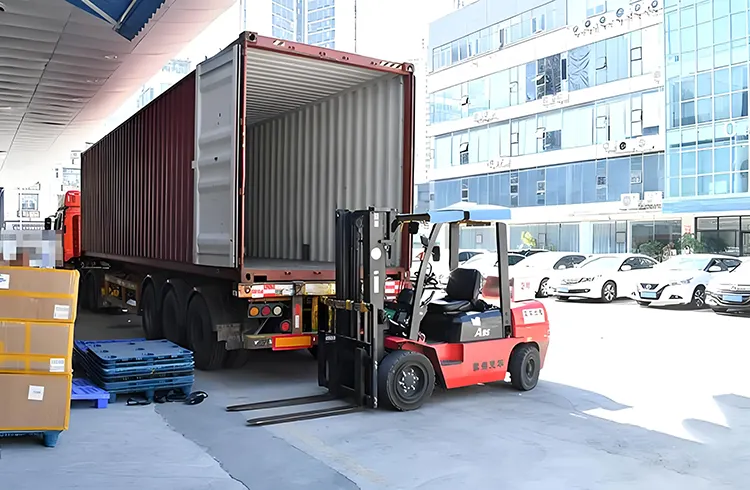
4. Order Quantity and Packaging
Beyond material and production, how much you order and how it’s packed has a major influence on the final price per piece. These are often overlooked factors, but they can swing costs dramatically—especially for custom or low-volume rubber parts.
Minimum Order Quantity (MOQ)
Rubber production typically requires setup time, mold pre-heating, and post-curing, regardless of batch size. Therefore, small orders incur a higher cost per unit, as the setup costs are spread across fewer pieces. At KINSOE, we offer flexible MOQs starting at 500 meters or pieces, but we always advise customers on volume breakpoints for optimal cost efficiency.
Quote: “Ordering 1,000 pieces might cost nearly the same as 300—simply because the setup cost remains constant.”
Batch Size and Volume Discounts
Larger order volumes benefit from economies of scale: raw materials can be purchased in bulk, production lines can run longer without interruption, and labor is used more efficiently. These savings are passed on to the buyer through tiered pricing structures. For instance, doubling the quantity doesn’t necessarily double the price—it might only increase total cost by 30–40%.
Special Packaging or Labeling
Standard bulk packaging is typically included in the base price. However, if you need custom labeling, individual bagging, barcode stickers, or carton branding, these additional steps increase labor and material costs. For parts going into retail channels or regulated industries, special packaging may be non-negotiable—but buyers should be aware of the added cost.
Custom Branding Needs
Some clients request molded logos, printed part numbers, or company-specific color codes. These features can require customized tooling or post-processing like laser marking, all of which add incremental costs to each unit.
In short, the more customized and fragmented the order, the higher the cost per unit. That’s why we always encourage buyers to consolidate orders and plan ahead where possible, balancing flexibility with volume pricing.
5. Testing and Compliance Costs
In many industries, especially those involving human safety or regulatory oversight, compliance and testing are not optional—they are essential. But with that assurance of quality comes a cost. Whether it’s a rubber seal for medical equipment or a component in a chemical processing plant, the verification requirements add time, labor, and expense.
Mechanical and Chemical Testing
Standard tests may include tensile strength, elongation, compression set, hardness (Shore A), and chemical resistance. These are crucial for verifying performance, especially when parts must endure repeated stress or exposure to aggressive media. Each test typically requires sample preparation, certified equipment, and expert interpretation—raising the cost of quality assurance.
Third-Party Certifications
When customers require FDA, NSF, WRAS, UL, or other third-party certifications, the cost escalates. Certification bodies charge fees for sample evaluation, factory audits, and ongoing compliance verification. Some customers also request certificates of conformance (COC) or material traceability documentation, which require additional administrative work and validated supply chains.
Highlight: “For regulated industries, compliance isn’t a feature—it’s a legal requirement. And it’s priced accordingly.”
Aging and Environmental Simulation
Accelerated aging tests like ozone exposure, UV resistance, thermal cycling, or salt spray testing are often used to simulate real-world conditions. These long-duration or highly specialized tests are expensive but essential when reliability is mission-critical, such as in aerospace or defense applications.
Custom Quality Documentation
Some B2B clients require detailed inspection reports, PPAP files, FAI data, or control plans. Preparing and managing these documents adds overhead, especially when they must be customized per batch or per part number.
At KINSOE, we work closely with clients in highly regulated sectors such as food, beverage, medical, and automotive, ensuring that all products meet compliance standards without unnecessary testing or over-engineering. Our approach helps strike the right balance between product assurance and cost control.
6. Country of Origin and Labor Costs
Where a rubber sealing part is manufactured can dramatically influence its price—due to labor rates, infrastructure maturity, and macroeconomic policies. Understanding these regional differences helps buyers make smarter sourcing decisions that balance cost, quality, and reliability.
Labor Rates in Manufacturing Region
Rubber production is labor-intensive, especially in post-processing steps like deflashing, trimming, and inspection. Countries with lower labor costs, such as China, India, or Vietnam, offer a significant price advantage compared to Western nations like Germany or the U.S., where wages are substantially higher. However, price differences must also consider the tradeoff between cost and production sophistication.
Insight: “The same seal molded in Germany could cost 2–4 times more than one made in China, simply due to wage structures.”
Local Industrial Capabilities
Some countries have developed deep, specialized ecosystems for rubber manufacturing. China, for example, benefits from a mature industrial chain, including local rubber compounders, mold makers, and machine suppliers. This not only lowers costs but also shortens lead times and increases responsiveness to custom needs.
At KINSOE, based in China, we leverage this supply chain to offer competitive prices without sacrificing technical support or lead time—especially for extrusion and molding work.
Trade Policies and Tariffs
International pricing is also influenced by import/export duties, anti-dumping regulations, and free trade agreements. For instance, importing rubber products from China to the U.S. may incur tariffs, while sourcing from an FTA country could be tariff-free. These policy dynamics can make or break the cost-effectiveness of a supplier.
We assist our clients by navigating the latest trade rules, offering both FOB and CIF terms, and providing country-of-origin certificates to ensure smooth customs clearance.
Ultimately, the country of origin affects more than just labor—it impacts the entire cost structure, risk profile, and scalability of your sealing solution.
7. Supply Chain and Logistics
Even the most perfectly engineered rubber seal can become costly if the supply chain is unstable or poorly optimized. From raw material availability to freight options, logistics plays a pivotal role in both the unit price and the overall reliability of your sealing part procurement.
Raw Material Availability
If a specific rubber compound or additive is in short supply—due to geopolitical events, export restrictions, or natural disasters—the price can spike unpredictably. For instance, during global disruptions, the cost of silicone skyrocketed due to limited availability of silicon metal. Sourcing from regions with stable and abundant supply chains helps mitigate this risk.
Freight and Delivery Terms
Shipping method matters. Air freight is fast but costly, while sea freight offers better economics at the expense of speed. Buyers must also consider Incoterms like FOB, CIF, or DDP, which determine who bears the shipping and insurance costs. Misalignment here can lead to hidden charges or delivery delays.
Tip: “Always clarify delivery terms upfront—logistics can account for 10–30% of total landed cost depending on volume and urgency.”
Lead Times and Supply Risk
Lead time isn’t just about delivery—it’s about predictability. A supplier with inconsistent lead times creates risk in your inventory planning, which can lead to stockouts, production delays, or emergency purchases at inflated prices. At KINSOE, we maintain safety stock for key materials and offer lead time transparency to keep our customers’ production lines moving.
Currency Exchange Volatility
For international buyers, price fluctuations aren’t always due to production costs—they’re often the result of currency exchange rate swings. A weakening dollar or euro can instantly inflate the cost of an overseas order. That’s why larger buyers sometimes hedge currency risk, or work with suppliers offering fixed-rate contracts.
At KINSOE, we help mitigate these risks by offering flexible shipping options, optimized batch planning, and clear communication throughout the logistics process.
8. Supplier’s Business Model and Capabilities
Not all rubber seal suppliers operate the same way. The internal structure, business model, and technical capabilities of a supplier can significantly impact pricing, lead time, customization options, and long-term value. Choosing the right type of supplier is just as important as choosing the right material.
OEM vs. Distributor
Original Equipment Manufacturers (OEMs) like KINSOE produce goods in-house, while distributors source from third parties. Working directly with an OEM reduces markup, shortens the communication chain, and improves control over specifications. Distributors, while convenient for off-the-shelf parts, typically offer less flexibility and higher pricing for custom projects.
In-House Manufacturing vs. Outsourced
Some suppliers claim manufacturing capabilities but actually outsource molding or extrusion work. This reduces visibility, increases risk, and limits responsiveness. At KINSOE, we handle design, compounding, molding, trimming, and inspection in-house, which allows us to maintain tight quality control and adapt quickly to customer changes.
Vertical Integration
A vertically integrated supplier controls multiple steps in the value chain—from rubber formulation and mold making to final packaging. This integration reduces costs, shortens lead times, and eliminates finger-pointing when problems arise. It also allows for better R&D support and faster prototyping.
Quote: “The more control a supplier has over their process, the more stable and competitive their pricing will be.”
R&D and Custom Engineering Support
For custom seals or demanding applications, engineering support is invaluable. Suppliers that invest in 3D CAD design, prototyping, FEA simulation, and compound testing offer more than just products—they provide solutions. While this may come with slightly higher overhead, the long-term savings in performance, fit, and reliability often outweigh the initial investment.
At KINSOE, we pride ourselves on being a solution provider, not just a parts vendor. Our in-house engineers and testing lab help optimize designs from the first sketch to final production—without the markups and miscommunications that come from third-party outsourcing.
9. Post-Processing and Finishing
The journey of a rubber sealing part doesn’t end when it comes out of the mold. In fact, post-processing steps often determine whether the part meets its final functional and aesthetic requirements. These finishing processes, while critical, can add to overall production costs depending on complexity and quality standards.
Deflashing, Bonding, Coatings
Rubber parts commonly require deflashing—the removal of excess rubber material along mold parting lines. Manual deflashing is labor-intensive, while cryogenic or automated systems involve costly equipment. Additionally, parts that need to be bonded to metal inserts or treated with release agents, primers, or protective coatings will incur higher material and labor costs.
Example: “A simple gasket with no flash may cost $0.10, while the same part with bonded metal or PTFE coating can cost $0.60–$1.00.”
Laser Marking or Adhesive Backing
Clients often request part numbers, batch codes, or branding to be laser-marked onto rubber parts—especially in automotive, aerospace, or industrial applications. Similarly, 3M adhesive backing or double-sided tape layers are sometimes added to gaskets or sealing strips for easy installation. Both processes require extra time, equipment, and raw materials.
Special Cleaning or Sterilization
Sealing parts used in medical, food, or cleanroom environments often undergo post-mold cleaning, sterilization, or dust-free packaging. These steps must meet specific protocols (e.g., ISO Class 7), requiring controlled environments and trained staff. Even something as simple as lint-free packaging or ethanol wiping can increase costs substantially.
At KINSOE, we support a wide range of finishing services—from precision deflashing and surface texturing to custom labeling and adhesive laminating—tailored to the needs of each industry. We always communicate these options upfront to ensure the total cost is transparent and justified by the application.
10. Environmental and Regulatory Costs
In today’s global marketplace, sustainability and compliance are no longer optional—they are mandatory for most industries. Environmental regulations and green manufacturing standards directly influence the cost of rubber sealing parts, especially for companies committed to reducing their environmental footprint or complying with international legislation.
Waste Disposal and Environmental Fees
Rubber processing generates waste—from flash material and failed parts to solvent residues and cleaning fluids. Responsible manufacturers must adhere to proper waste management protocols, which often include treatment, recycling, and certified disposal. These services come with government fees and third-party contractor costs, particularly in regions with strict environmental laws.
Insight: “Compliance with green policies may increase production cost by 5–10%, but it’s a must for long-term business sustainability.”
Carbon Tax or Energy Compliance
Countries like those in the EU and parts of North America have implemented carbon pricing mechanisms or mandatory reporting on greenhouse gas (GHG) emissions. Manufacturing rubber parts—especially high-temperature curing processes—consumes energy. Companies are either taxed based on emissions or required to invest in energy-saving upgrades to remain compliant.
Green Manufacturing Standards
Clients in Europe, Japan, and North America increasingly require suppliers to align with RoHS, REACH, ISO 14001, or ESG initiatives. Meeting these standards involves more than certifications—it includes continuous auditing, documentation, staff training, and facility upgrades. Suppliers that follow these practices provide peace of mind, but these benefits come at a price.
At KINSOE, we take environmental responsibility seriously. Our ISO-compliant processes, low-emission production lines, and certified material sourcing allow us to meet global regulatory requirements while maintaining competitive pricing. We also offer clients full transparency in our sustainability practices, making it easier for them to meet their own compliance goals.
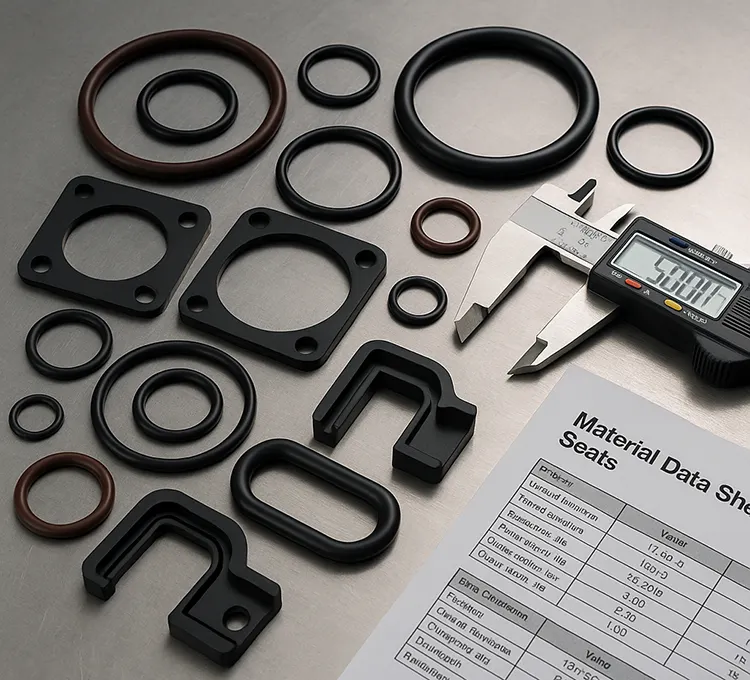
Conclusion: Price is Multi-Factorial—So is Value
Rubber sealing parts may look simple, but their pricing is anything but straightforward. As we’ve explored, the cost of a single gasket or O-ring can be influenced by more than ten interconnected variables—from the rubber compound and design tolerances to compliance testing, packaging, country of origin, and post-processing requirements.
For procurement managers, engineers, or product developers, understanding these factors is critical. It allows you to make informed trade-offs, avoid over-specifying or under-engineering a part, and align your sourcing strategy with both technical needs and budget constraints. In short, knowing what drives cost is the first step toward controlling it.
At Kinsoe, we specialize in helping B2B clients strike that perfect balance between performance and price. With over 20 years of experience, we offer:
- Tailored material selection guidance to fit your application and certification needs
- Flexible MOQs and scalable production for both prototypes and mass production
- In-house extrusion and molding, ensuring consistent quality and cost control
- Competitive pricing from China, leveraging our vertically integrated supply chain
If you’re evaluating rubber sealing solutions and want to optimize both performance and cost, our team is ready to assist—from concept to delivery.
References:
Related articles:

